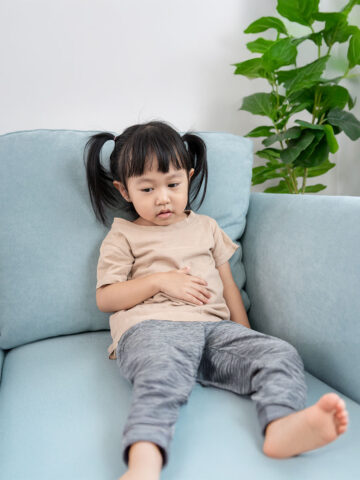Time has gone by in the blink of an eye, and your toddler seems ready to leave the crib and transition into a big kid bed. But how can parents be sure?
These tips from Dr. Priya Mody, a pediatrician in the CHOC Primary Care Network, can help parents decide when is the right time and help ease the transition.
When to consider moving a toddler to a bed
First, it’s most important that parents consider the child’s safety and maintain a healthy sleep routine, Dr. Mody says. And while milestones vary for all children, many parents begin considering moving their child into a bed by around age 2.
Here are some signs that the toddler is ready for a bed:
- The crib mattress is at its lowest setting and the height of the top rail is less than three-quarters of the child’s height.
- They are able to pull themselves up and over the crib rail.
- They can put their leg on or over the top rail, even if they haven’t yet climbed over.
- They are 35 inches tall.
- The toddler is working on toilet training.
How to choose the right bed for your child
Whether parents start with a convertible crib or head straight to a twin bed, safety is critically important when choosing a bed for a toddler. Here, Dr. Mody shares tips for choosing the right bed:
- Add guardrails to the bed to prevent falls. Fit the guardrails against the mattress and frame, so there are no gaps.
- If the child moves up to a bed sooner than age 2, hold off on pillows. After they turn 2, start with a small, firm pillow.
- Don’t place the bed under a window.
- Don’t use an upper bunk bed or other raised bed for children younger than 6.
How to ease the crib-to-bed transition
- Prepare the child by talking about the change in advance in a positive, fun way.
- Keep consistent routines for timing and pre-sleep rituals. Remember, toddlers and preschoolers need 10 to 14 hours of sleep a day.
- Start small: Beginning the transition with naps could be a good first step.
- Build excitement by allowing the child to choose linens for their new bed.
What to do if the child gets out of bed
If they get out of bed, return them to bed immediately, Dr. Mody says. Let them know that you’ll be back to check on them in a few minutes, but that it’s time to be quiet and go to sleep.
Parents may need to do this several times for a few days. Try to be consistent.
Give praise when the child stays in bed through the night. You might offer a small reward like an extra story at bedtime.
Other safety factors to consider
Now that the child has more freedom and range of movement, families ought to take extra safety measures, Dr. Mody recommends:
- Ensure the child’s bedroom is safe.
- Consider placing a soft rug or even pillows on the ground next to the bed, just in case.
- Hang on to the baby monitor or tie a bell on their door so parents will know if the child is out of bed.
- Put safety gates at the top and bottom of stairs.
- Keep anything that might be dangerous out of reach throughout the house. Consider medicines, makeup or cosmetics, cleaning products, small items that may be swallowed, and sharp kitchen items or tools.
- Ensure heavy furniture in the child’s room and throughout the home is securely anchored to the wall.
For more health and wellness resources from the pediatric experts at CHOC, sign up for the Kids Health newsletter.
Find a CHOC Primary Care Pediatrician
From babies to teens, pediatricians from CHOC’s Primary Care Network partner with parents to offer immunizations, sick visits, sports physicals and more.





